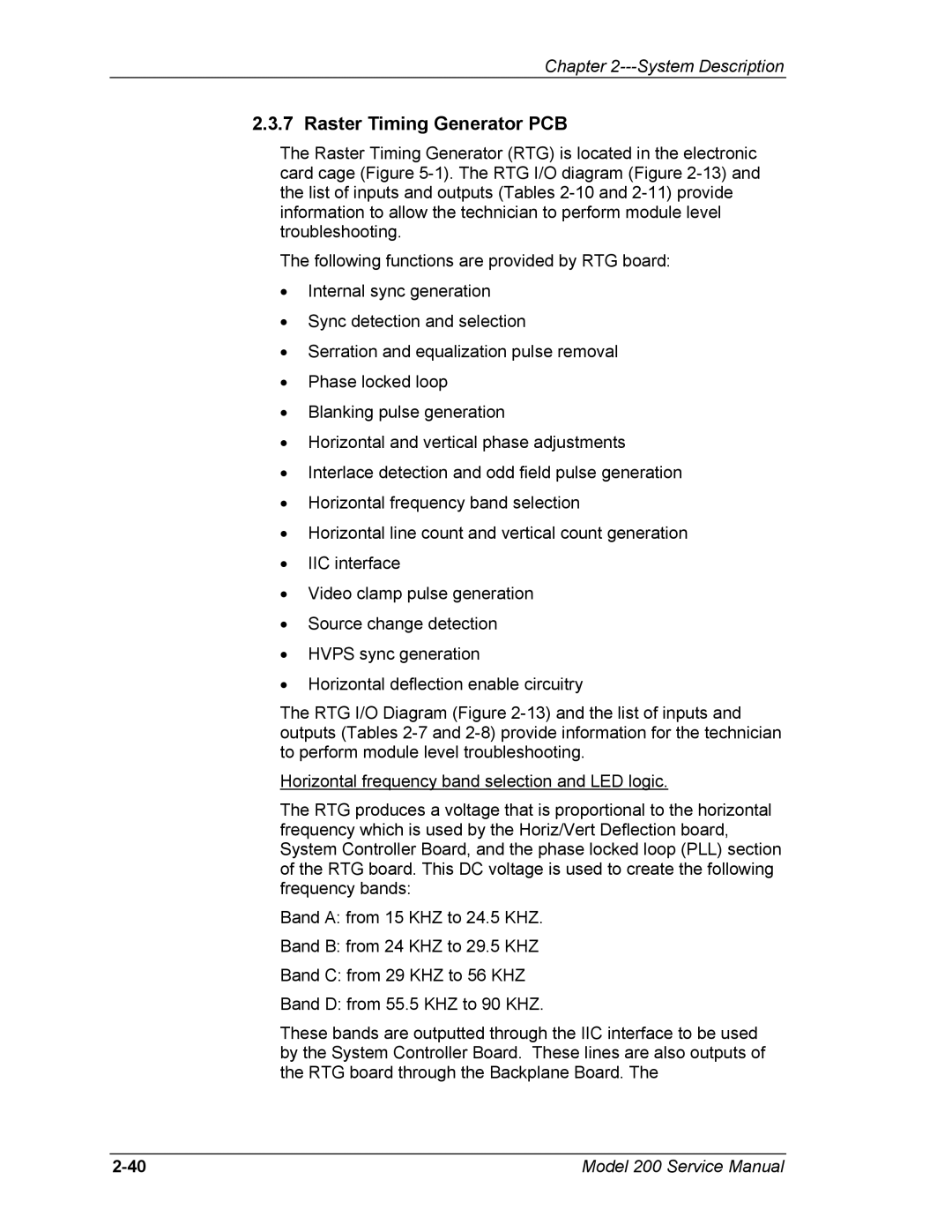
Chapter 2---System Description
2.3.7 Raster Timing Generator PCB
The Raster Timing Generator (RTG) is located in the electronic card cage (Figure
The following functions are provided by RTG board:
•Internal sync generation
•Sync detection and selection
•Serration and equalization pulse removal
•Phase locked loop
•Blanking pulse generation
•Horizontal and vertical phase adjustments
•Interlace detection and odd field pulse generation
•Horizontal frequency band selection
•Horizontal line count and vertical count generation
•IIC interface
•Video clamp pulse generation
•Source change detection
•HVPS sync generation
•Horizontal deflection enable circuitry
The RTG I/O Diagram (Figure
Horizontal frequency band selection and LED logic.
The RTG produces a voltage that is proportional to the horizontal frequency which is used by the Horiz/Vert Deflection board, System Controller Board, and the phase locked loop (PLL) section of the RTG board. This DC voltage is used to create the following frequency bands:
Band A: from 15 KHZ to 24.5 KHZ.
Band B: from 24 KHZ to 29.5 KHZ
Band C: from 29 KHZ to 56 KHZ
Band D: from 55.5 KHZ to 90 KHZ.
These bands are outputted through the IIC interface to be used by the System Controller Board. These lines are also outputs of the RTG board through the Backplane Board. The
Model 200 Service Manual |
